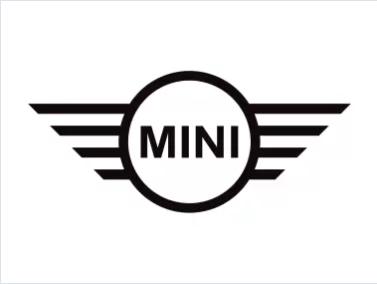Why You Should Focus On Improving Repair Ignition
A Comprehensive Guide to Repairing Ignition Systems
Intro
The ignition system of an automobile is important for its operation, playing an important function in starting the engine and preserving its smooth performance. G28 Car Keys within the ignition system can cause trouble in beginning the car, misfires, and can even impact the total performance. In this article, we will dig into the types of ignition systems, common concerns, and actions for repairing an ignition system, along with a handy FAQ area to deal with typical issues associating with ignition repairs.
Kinds Of Ignition Systems
Understanding the kind of ignition system in your lorry is important for effective troubleshooting and repair. The primary types are:
Conventional Ignition Systems
- Make use of a mechanical breaker points system.
- Consist of an easy coil and supplier setup.
Electronic Ignition Systems
- Use electronic sensing units for timing and firing.
- More reputable and efficient than conventional systems.
Distributor-less Ignition Systems (DIS)
- Employ numerous coils without a supplier.
- Improve shooting timing and decrease upkeep requirements.
Coil-on-Plug (COP) Ignition Systems
- Feature a separate coil for each spark plug.
- Boost performance and fuel performance.
Table 1: Comparison of Ignition System Types
Kind Of Ignition System
Key Features
Benefits
Drawbacks
Conventional
Mechanical breaker points, simple design
Low cost, easy to repair
Requires regular maintenance, less effective
Electronic
Sensors and electronic components
Better efficiency, enhanced fuel efficiency
More complicated, higher repair expenses
Distributor-less (DIS)
Multiple coils, no supplier
Minimized maintenance, better timing
Can be more expensive to replace parts
Coil-on-Plug (COP)
Individual coils per stimulate plug
Outstanding efficiency, less maintenance
Pricey to service if issues occur
Typical Ignition Problems
A number of issues may arise within an ignition system, causing a breakdown. Here are some typical issues observed in ignition systems:
- Dead Battery: Often mistaken for ignition failure, a dead battery can prevent the engine from starting.
- Faulty Ignition Coil: A malfunctioning ignition coil can result in engine misfires and poor fuel economy.
- Worn Spark Plugs: Old or worn plugs can impact combustion, causing rough idling and trouble starting the engine.
- Malfunctioning Ignition Switch: A malfunctioning ignition switch can avoid power from reaching the ignition system.
- Broken Wiring or Connections: Damaged wires can result in shorts or loss of power within the ignition system.
Steps for Repairing an Ignition System
Repairing an ignition system can be an overwhelming job, but with a methodical method, it can be manageable. Follow these actions:
1. Diagnose the Issue
Begin by identifying the symptoms of the issue. Some concerns to think about include:
- Does the engine crank but not begin?
- Is there a consistent clicking sound when turning the key?
- Are there any warning lights on the dashboard?
2. Examine the Battery
A dead battery is often the most uncomplicated problem. Use these actions:
- Inspect battery terminals for rust.
- Inspect the voltage with a multimeter (ought to read around 12.6 volts).
- Jump-start the vehicle if essential.
3. Check the Ignition Components
Next, inspect the ignition components:
- Ignition Coil: Test the resistance with a multimeter. Replace if readings are outdoors producer specifications.
- Trigger Plugs: Remove and check for wear or carbon buildup. Tidy or replace as required.
4. Assess the Wiring
Examine all wiring and connections:
- Look for any signs of rust or breaks in the wires.
- Guarantee all connections are tight and free from dirt.
5. Evaluate the Ignition Switch
If all else appears fine, the ignition switch itself might be the concern. Use the following steps:
- Check the switch's performance with a multimeter.
- If malfunctioning, think about replacing the ignition switch.
6. Reassemble and Test
After making essential repairs, reassemble any removed elements and test the ignition system.
Upkeep Tips for Ignition Systems
Preventative maintenance can extend the life of an ignition system substantially. Consider these tips:
- Regularly Replace Spark Plugs: Recommended periods are typically every 30,000 to 100,000 miles.
- Keep Battery Terminals Clean: Regularly check for corrosion and tidy as required.
- Examine Wiring During Routine Maintenance: Look for frayed or damaged wires.
- Perform Routine Engine Diagnostics: Early detection can conserve time and cash.
Table 2: Maintenance Schedule for Ignition Systems
Component
Advised Maintenance Interval
Notes
Trigger Plugs
Every 30,000 – 100,000 miles
Check owner's handbook for specifics
Battery
Every 12 months
Include terminal cleansing
Ignition Wires
Yearly assessment
Replace if any noticeable wear takes place
Ignition Coil
Every 50,000 – 60,000 miles
Test with a multimeter
FAQs
**Q1: How frequently ought to I replace my car's trigger plugs?A1: Normally, stimulate
plugs must be replaced every 30,000 to 100,000 miles, but you ought to always describe your car's owner handbook for particular recommendations. Q2: What triggers an ignition coil to fail?A2: Common
**reasons for ignition coil failure consist of overheating, electrical shorts, and wear gradually. Q3: Why does my car make a clicking noise but doesn't start?A3: A clicking
noise often indicates a dead battery or a faulty starter motor. Q4: Can I jump-start my vehicle if there is an issue with the ignition system?A4: Yes, you can jump-start your automobile to
test if the battery is the issue, however if the ignition system is bad, the vehicle might still not start. Q5: What indications show that the ignition switch is failing?A5: Signs of ignition switch failure consist of intermittent power loss to the electrical systems, issues starting,and difficulty turning the key. Repairing an ignition system can appear complex, however by comprehending the numerous components and following an organized method, automobile owners can fix and resolve many problems independently.
Routine upkeep prolongs the lifespan of the ignition system, making sure optimal lorry performance. If severe issues continue, looking for expert help is always a good idea.  ********
********